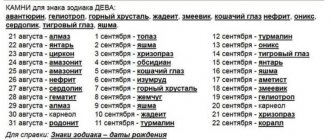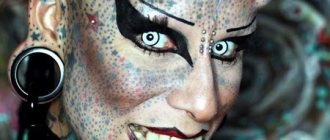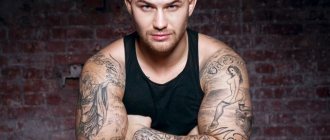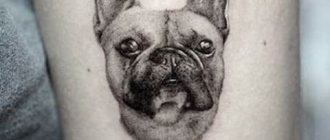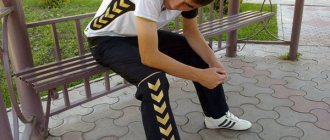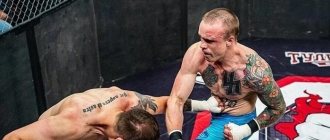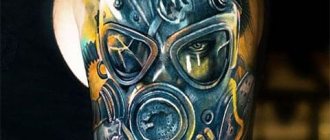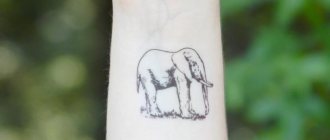June 16 would have been the 50th birthday of Tupac Shakur, a hip-hop legend and arguably the most influential rapper in history. A perfect occasion to remember how tough and crazy his life was. He was named after a Native American rebel leader, was raised by left-wing radicals, acted in Shakespeare plays, served time for beating up a director and sexually assaulting him (which he apparently did not commit) and caught bullets several times in his life. And many also believe that Tupac faked his death like the philosopher Machiavelli, of whom he was a fan.
Tupac Shakur got his name after an Indian revolutionary (and the latter after an Incan emperor)
In the early days of his life, the future rapper was named Lesane Parish, but at some point his parents had a rebellious spark, and they decided to name him after Tupac Amaru II, a Peruvian revolutionary of the 18th century. He was a descendant of the last Inca emperor Tupac Amaru I (after whom he took his name), had an excellent education for those times and decided to return the Indians to independence.

The rebellion was crushed, and Tupac Amaru II was executed by being torn to pieces by four horses. However, his name became synonymous with the anti-colonial struggle: in the end, he almost succeeded in taking the capital of the Spanish possessions in Peru, the city of Cuzco. Shakur's mother found this story inspiring and hoped that her son would inherit the revolutionary spirit of the man. That's pretty much how it turned out.
Tupac's mother and his immediate family were extremists
Tupac Shakur's lyrics are imbued with ideas of social struggle, and this is the result of growing up in a family of ardent rebels. His mother, Afeni Shakur, nurtured him while under investigation in the "Conspiracy against the Government of the United States. She was accused of involvement in the bombings, but was acquitted and released from custody just a month before her son was born. Both the mother and her entire entourage were members of the left-wing Black Panthers organization.

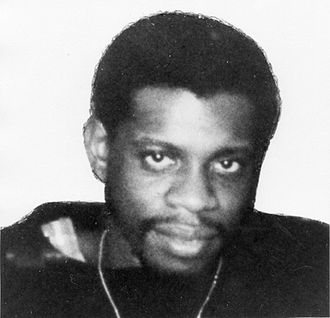
Mutulu Shakur, Fr.- Elmer "Geronimo" Pratt, godfather


Assata Shakur, aunt.
His stepfather, Mutulu Shakur, has been on the FBI's Most Wanted List for several years -- for a robbery in which two police officers and a security guard were killed. His godfather, Elmer Pratt, nicknamed "Geronimo," was a big shot in the Panthers and was investigated for killing a schoolteacher in an attempted robbery. Tupac's aunt (and godmother), Assata Shakur in general, was a living legend among black radicals: she committed several robberies and killed a cop in a shootout, went to jail, escaped, and then, in 1984, settled in Cuba, where she presumably still lives, despite being considered a particularly dangerous terrorist in the US.
Jewelry
Nostril piercings, diamond earrings and sparkling rings - Tupac loved jewelry, talked about it openly and wasn't shy about looking flashy. Photographer David Lachapelle even played on this with his famous photo shoot Becoming Clean in the bathroom, where Shakur's groin is studded with chains and bracelets. In addition to the usual gold set, Puck experimented with shape and size, as evidenced by the star ring in the Keep Ya Head Up music video, the crown piercing and numerous weighty charms in stones.
Tupac Shakur with Jada Pinkett-Smith, 1996.
© Kevin.Mazur / INACTIVE / Getty Images
Marcelo Burlon County of Milan, RUB 9033 at farfetch.com
Shay, 249,162 rubles at farfetch.com
Northskull, 15,851 rubles at farfetch.com
Tupac Shakur acted in Shakespeare's plays and in the ballet The Nutcracker
Despite his harsh surroundings, Tupac received a good education: his mother tried to develop in him not only rebellious fervor, but also a taste for creativity. Young Shakur was sent to the School of the Arts in Baltimore, where he studied acting, poetry, jazz and ballet. There he participated in productions of Shakespeare's plays and even played the king of mice in Tchaikovsky's ballet The Nutcracker.
At the same time, following his family, he politicized himself by joining a Communist youth organization and even dating the daughter of the head of the local cell. A lot of cultural baggage and radicalism overlapped with his new passion, hip-hop. He discovered rap in high school and quickly became a local star thanks to his feisty personality, sense of rhythm, and, needless to say, a much wider vocabulary than his opponents on the street.
Tupac Shakur became a star because of a white woman
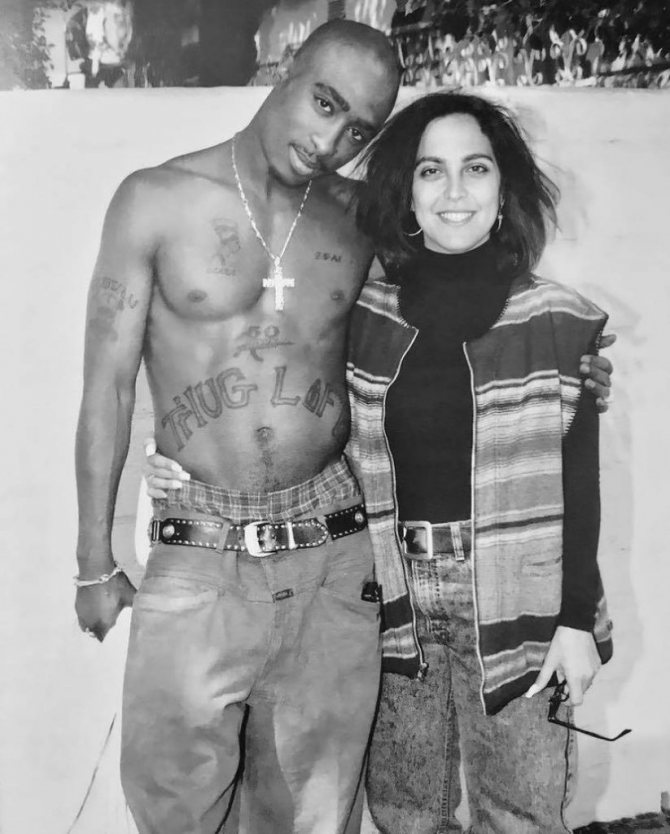

Leila Steinberg
When Tupac was 17, his family was forced to move from Baltimore to Marin City, California. It was a completely different world: no one else was messing with the young talent. No more Shakespeare and ballet - just the mean, dangerous street. Shakur's mother soon got hooked on drugs, and he himself began to push them, getting involved with the local gang. Ironically, the family had fled the ghetto in New York City to escape crime and violence, but there was much more.
It was here, however, that Tupac got lucky. In some strange way, he managed to be friends with a white woman named Leila Steinberg, who was much older than him. Both were into leftist ideas and argued a lot about politics. Shakur told her that he was making new music, rap, and was going to spread his ideas through it. The woman described him as "a young man with boundless charisma and the most infectious laugh in the world." As a joke, he offered her to be his manager. Leila, in turn, managed to put him in touch with a real music bonanza named Atron Gregory, who secured him a gig in the hip-hop group Digital Underground in 1990.
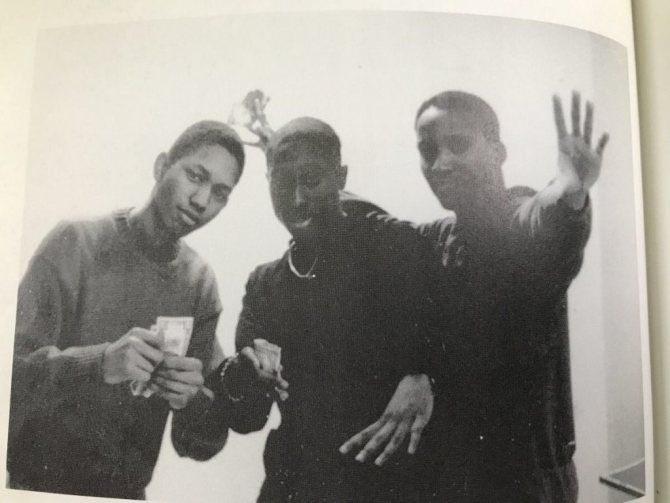

Soon Tupac Shakur released his own track Same Song, which became the soundtrack to the Dan Aykroyd comedy Trouble. And soon after that he recorded his debut album 2Pacalypse Now, which became a classic in his lifetime. The nice thing about this whole story is that Tupac didn't forget Leila Steinberg, he was grateful to her, and the two talked about each other as good buddies.
Vests and bandanas
The paisley print scarf he most often tied with a bow at the front, and the larger models pulled back over his head. The vests are a bit more varied - Tupac had no obvious preference, he chose the top to complete the image. So in the archives we find both leather vintage and crochet, and knit models with patch pockets.
After his performance at the Regal Theater in Chicago, 1994.
© Raymond Boyd / Getty Images
© Getty Images
Rick Owens, 129,940 rubles at mrporter.com
Acne Studios, 5,793 rubles at farfetch.com
Oliver Spencer Loungewear, 21,350 rubles at mrporter.com
Tupac Shakur was imprisoned twice: for beating a director and sexual assault
Tupac Shakur has had many criminal incidents in his life. And all of them, as one, look strange and even absurd:
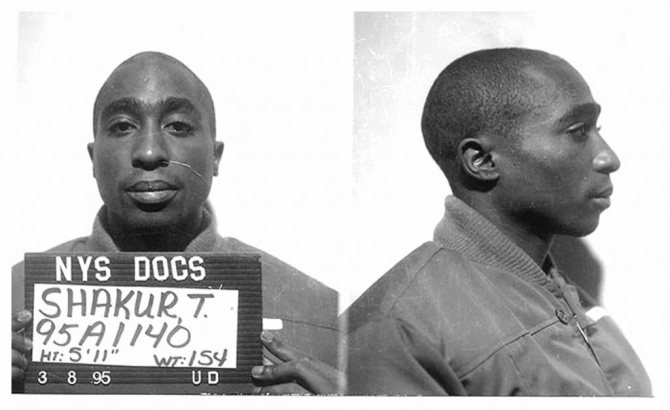

В 1991 In 1991, he was beaten by the police during a walk, and without any charges - allegedly confused with some criminal. Shakur sued the police, who pleaded guilty to the charges. He received $43,000 in compensation.
В 1992 he was performing at an open-air festival in Marin City in 1992. During an autograph signing, a conflict occurred, Tupac pulled out a gun, but allegedly dropped it, after which it discharged - a bullet hit a six-year-old child who was riding his bicycle 90 yards away from the fight. The child died, but Shakur's guilt was not proven, but the boy's mother sued, trying to get the rapper to pay between $300,000 and $500,000 in compensation. The dispute was settled out of court and, apparently, after the rapper's death.
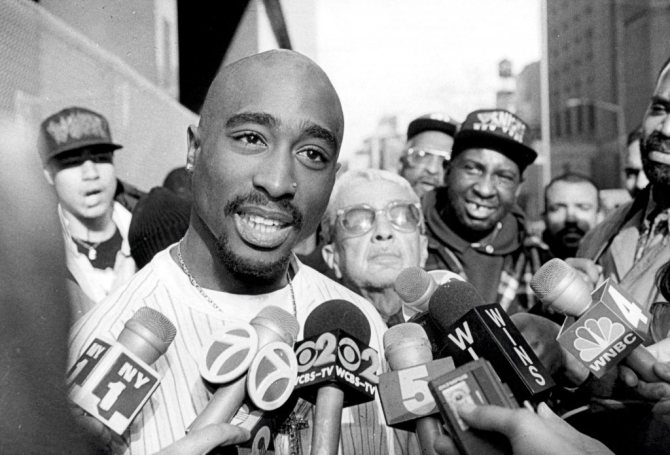

В 1993 In 1993 Tupac Shakur shot two police officers. Again the story was strange, and again the law sided with him. The thing is that the cops were drunk to the gills and apparently attacked Shakur when he refused to let them pass in his car. The cops themselves were carrying stolen weapons and giving confusing and false testimony at the trial. The fight ended with the cops escaping, but Shakur shot them both: one in the buttock, the other in the back. Nevertheless, it was considered self-defense.
Also in 1993. he attacked rapper Chauncey Winn of the band M.A.D. at a concert at the University of Michigan with a bat in his hands. Shakur pleaded guilty and was sentenced to 30 days in jail, which ended up with probation and community service.
В 1994 In 1994, the rapper served 15 days for assaulting director Allen Hughes. Shakur was supposed to play in Threat to Society, but he got into an argument with Hughes and beat him up. Proof of the accusation came in an interview for MTV Raps in which Tupac bragged about his act.
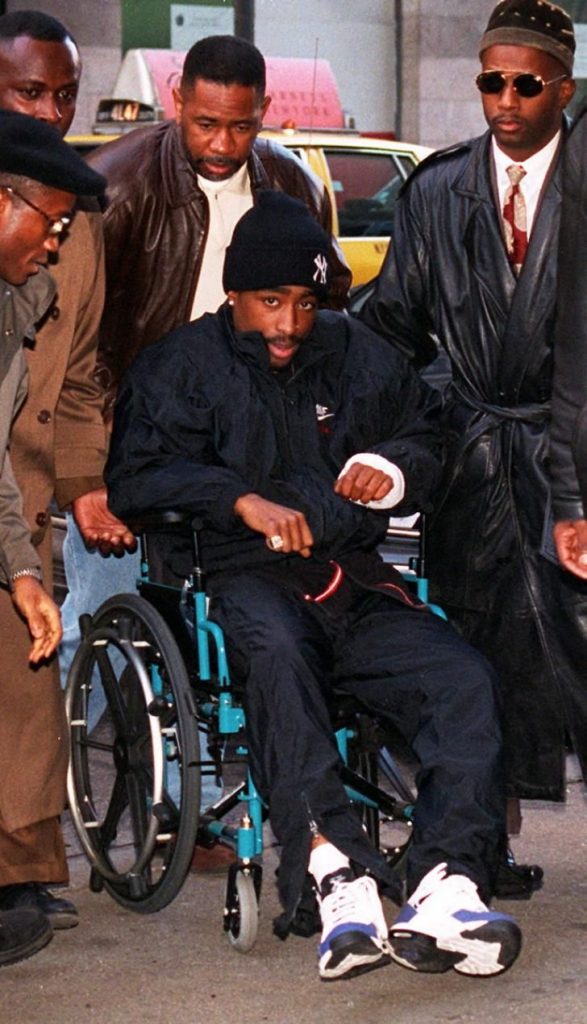

Tupac Shakur before the 1995 trial.
В 1995 He went to jail for four years in 1995 for sexually assaulting a female fan. The story there, as in all previous cases, is murky. The groupie herself claims she went to the rapper's hotel room to give him a blow job. But she did not agree to further sex, so Shakur was found guilty of rape and went to jail. However, he managed to get out after a year and a half - good behavior and bail of a million and a half dollars had an effect. Because of this case, Tupac became the first performer in history to hit the charts while in prison.
Tupac Shakur is a legend
Two years later Tupac Shakur was already in Los Angeles, but it was not so easy to conquer this city. For almost two years he was homeless, living practically on the street, but he managed to release a second album. Like the first, most of Tupac Shakur's songs were about the exorbitant hardships of life in the black ghetto, poverty, powerlessness, lawlessness at the hands of whites. Tupac Shakur absorbed the ideology of the Black Panthers from childhood and made no secret of it. This album literally blew up African-American youth, provoking crime.
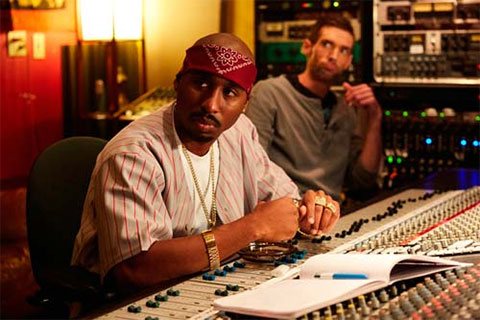

Tupac Shakur.
In the Texas teenage shooting trial, for example, the lawyer of Ronald Ray Howard, a black teenager, said that his client was pushed to kill the policeman by a song of Tupac Shakur, which Howard was listening to at the time. It should be said that Tupac Shakur himself was well known in the criminal environment as a writer and performer of gangsta rap.
Tupac Shakur regularly provoked the police, staging public scandals with fights, and when arrested he was punched in the face by the police. This added to his popularity and earned him a good income. In 1991, Tupac Shakur was sued by the Oakland police for $42,000 in compensation for the fact that the cops beat him up during his arrest. He asked for $10 million, but the court decided to moderate his appetite.
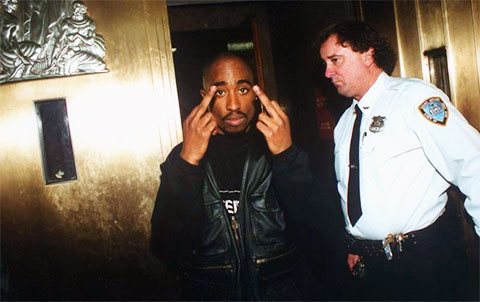

Tupac Shakur
By the way, Tupac Shakur was the sole breadwinner of a large family - his mother, sister, aunt, her children and in-laws, together up to 20 souls. Apparently, Tupac Shakur was no stranger to outright criminality, only the police could not prove anything every time. In 1992 he was arrested for his part in a street shooting, when an accidental bullet killed a little boy. Again, he got away with it. In 1993, he had 12 arrests.
A drunken Tupac Shakur may have beaten up a cab driver who wouldn't let him smoke marijuana in the car. That same year, he beat director Allen Hughes, who kicked him out of his film, Threatening Society, and bragged about it on a TV show. For this live on-air scuffle, he was only arrested for 15 days. Impunity was as intoxicating as a drug - Tupac Shakur became uncontrollable. Popularity saved him from a sure-fire prison sentence for shooting two cops he thought were taunting a black driver.
True, everyone survived, and in court the defense was able to prove that the cops who had been shot were drunk. Shakur was acquitted!
Two years before his death, Tupac Shakur took several bullets from unknown assailants
On November 30, 1994, Tupac Shakur caught several bullets, the day before his rape trial. He arrived at the Quad Studios recording studio in Times Square that night. He was attacked in the lobby by several unknown assailants who robbed him and shot him. So he appeared in court after surgery in a hospital wheelchair.
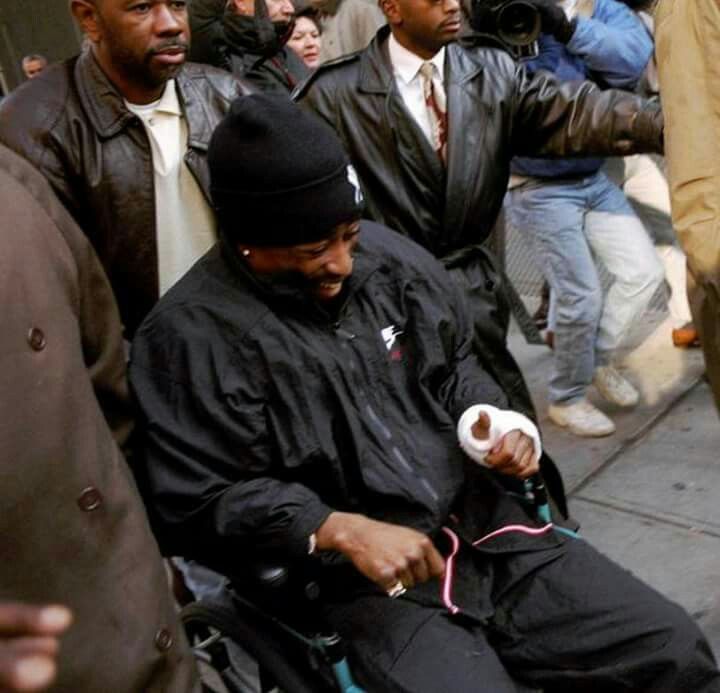

Shakur himself believed that the attack was ordered by two odious crime bosses and part-time music managers - Jimmy Henchman and "Haitian" Jack. And he called them the organizers of the rape case - they had long-standing conflicts with Shakur.
Tupac Shakur in jail
Shakur's popularity grew, the number of albums multiplied. But he could not avoid prison. All the same 1993, a case was filed against Shakur for the rape of his 19-year-old groupie, Ayanna Jackson, as well as other crimes. However, his lawyers ensured that he remained free until the trial.
Tupac Shakur in wheelchair before trial
And on November 30, 1994 the first attempt was made on Shakur - near the entrance of his studio he was shot with five bullets and robbed, robbing him of his jewelry worth 40 thousand dollars. Tupac Shakur later blamed it on rival rappers.
The musician survived thanks to the efforts of doctors and seriously feared that he would be killed. After his discharge from the hospital, he secretly lived at the home of the actress Jasmine Guy. He appeared in a wheelchair and was acquitted of three counts of homosexuality and unlawful possession of a weapon. But he could not escape the sexual harassment charge and had to go to jail. To tell the truth, they gave him a vague sentence of 1.5 to 4.5 years.
At the beginning prison seemed to Shakur an escape from all his mania, alcohol and drugs. His mind became clear and bright. Even before his imprisonment he recorded tracks for a new album, "Me Against the World," and already in prison he finished it. The album went platinum in a few months.
In fact in prison Tupac Shakur renounced his past, admitting that he "lived the life of a thug". In April 1995 he married Keisha Morris, a girl from another world, the world of normal people, who did not go to bed with him the first time they met. They dreamed of a quiet family life after Shakur's release, devising names for their future children.
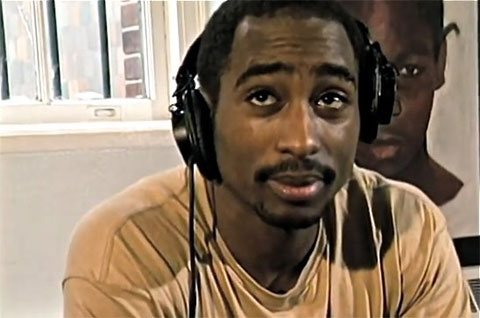

Tupac Shakur in prison
But soon prison seemed like hell to him. "I have never been so humiliated and disgraced as I was in this prison," Tupac Shakur told friends who visited him. He tried to get a lawyer to release him on $3 million bail, but all was in vain. On top of that, he was nearly broke - he was facing huge legal fees from lawsuits across America.
Tupac Shakur wrote his last album, The Don Killuminati: The 7 Day Theory, in just one week.
Shortly before his death, Tupac Shakur recorded the album The Don Killuminati: The 7 Day Theory. It came out eccentric and sparked a lot of conspiracy theories among fans.
First of all, it was recorded in just 7 days, and the number 7 appears in it several times (which is allegedly "coded" in his murder as well - for example, he was driving a BMW 7 Series). Secondly, for some reason, Tupac took the pseudonym Machiavelli for this album, after the Italian philosopher who, among other things, became famous for faking his own death several times.
This week marks the 20th anniversary of the death of Tupac Shakur, the legendary rapper and iconic figure in the genre. Today we take a closer look at what his body art and tattoos hold in store for him.
Tattoos have long been an integral part of hip-hop culture. Some rappers stuffed memorable dates and symbols for themselves, while others stuffed themselves from head to toe. And if decoding and counting Lil Wayne's tattoos would make a big novel, then with Tupac it's much easier.
And at the same time more complicated, because every tattoo on his body meant something to him - whether it was an important life stage, a postulate, a creed, or a piece of his own philosophy. Today we will talk about what the inscriptions and drawings on the body of the legendary Tupac Shakur mean.
Neck
The inscription "Makaveli" [side].


Tupac spent most of 1995 behind bars, where he was introduced to the teachings of Italian philosopher Niccolo Machiavelli. It was from his writings that he learned about princes who faked their deaths to deceive their enemies. It was then that he chose a new pseudonym, Makaveli, under which he recorded the album "The Don Killuminati: The 7 Day Theory" (it was released after the death of the rapper). In many ways, this is what gave rise to many rumors that the rapper is still alive today.
Crown with "Boss Playaz" written on it. [back].
That's what Tupac called himself in a letter to Nina Bhadrishvor, editor of Uncut magazine, during his 1995 imprisonment. Quote:
"Many are unable to survive the next stage of Thug Life...They become addicted to death. But the real Boss Playa knows how to get to the next level... You gotta play the game, not let it play you. The regular Playa spins women... Boss Playa spins life. He is a thinker, a leader, a builder, an entrepreneur, a soldier, a teacher, and most importantly, a man! I want all my cronies to know that the next step exists."
Breasts


The Egyptian queen Nefertiti As a symbol of black beauty, grace and perfection. This tattoo directly reflects Tupac's love for his mother, Afeni Shakur. The caption below, "2 Die 4," is a reference to lines from the song "Something 2 Die 4." "You know what my mother used to say to me? / If you can't find something to live for, you'd better find something to die for.
2Pac - the rapper's very first and simplest tattoo, symbolizing a name change from Lysine Parish Crooks to Tupac Shakur. His mother renamed her son after Tupac Amaru II, the last Incan ruler who was executed by Spanish colonists.
The body
AK-47 with the inscription "50 Niggas."
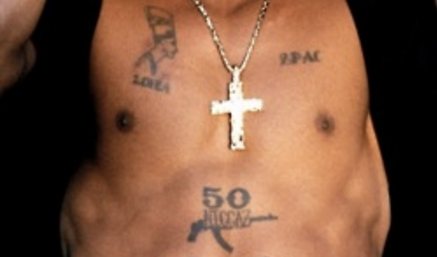

The number 50 refers to an idea Tupac believed in - if one black man from each state united with each other and started fighting for himself, they would be stronger than any weapon known to the world.
A huge "Thug Life" sign.


Perhaps the most famous and iconic tattoo on the rapper's body, which embodied his life code, principles and second family (Puck even formed a band of the same name). Tupac inked it in 1993, when he and his adoptive father Motulu Shakur turned "Thug Life" into an acronym - The Hate U Give Little Infants Fucks Everybody.
LEFT HAND.
Black Panther Head.


Several members of Tupac's family were members of the radical African American organization, the Black Panthers. In his youth, Shakur was referred to at home as none other than the "Black Prince" because they believed he could lead the Panthers.
Jesus Burning on the Cross


Although Tupac denied religion as an institution, he repeatedly mentioned in his songs and interviews that he believed it was God who would ultimately decide his fate. That's why in 1996 he released the song "Only God Can Judge" (Only God Can Judge Me). If you look closely, you can see Jesus has dreadlocks on his tattoo.
It reads "Only God Can Judge Me."
Tupac's most famous credo is not to answer to anyone but God, disregarding critics, envious people and others.
Crown with the inscription "DADA"
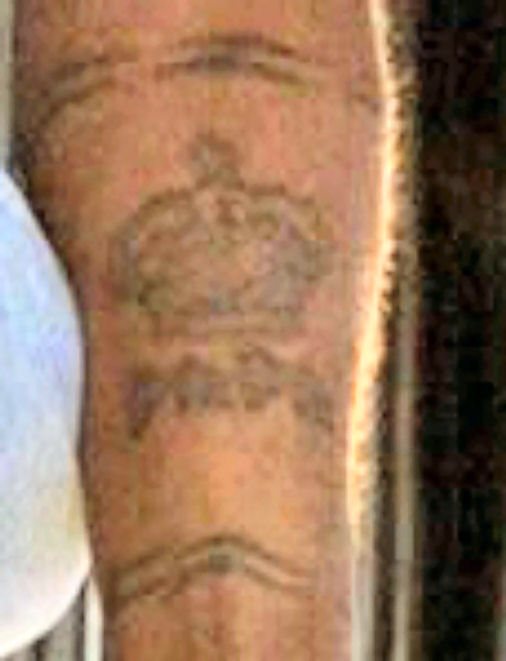

A symbol of Tupac's love for Kidada Jones, his date and the daughter of famed musician Quincy Jones. One of the most recent tattoos the rapper got before he died.
The Outlaw tattoo.


Tupac is the founder of the band The Outlawz, the name of which refers to the past of its members. Tupac himself grew up on the streets full of drugs and violence, and therefore became a criminal (Outlaw) at a young age.
RIGHT HAND.
Skull with the inscription "Be Ambitious With Love While Young"


A dangerous-looking skull with an image of a stack of money and a scale, with a child on one bowl and gold bars on the other. All of this is crowned by the caption "Be Ambitious With Love While Young." The most obvious interpretation is how to make a lot of money while remaining young and pure. Tupac himself, moreover, has repeatedly openly declared that he would die young.
Skull with bones and the inscription "Heartless
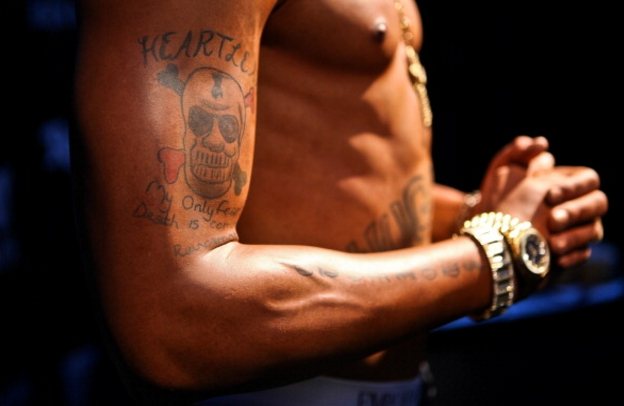

The caption under the image reads, "My only fear of death is to rise again. It's a line from such Tupac songs as "Only God Can Judge Me" and "No More Pain. It can be interpreted as both his desire to live his life without regrets and his desire to leave this cruel world.
The inscription "MOB."
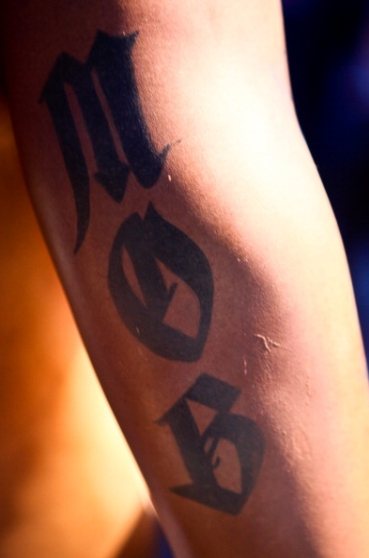

Originally, this acronym stood for "Member of Bloods", but Tupac himself never talked about this tattoo in such a way. Therefore, there are two the most probable versions: 1) "Money Over Bitches", a slogan that the rapper used more than once in his songs; 2) "Money, Organization, and Business", such interpretation he gave in a small video interview.
Crown with the inscription "Trust Nobody."
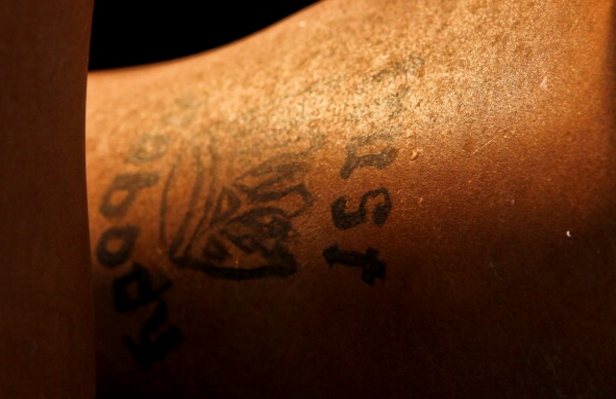

Made in 1995 at a Los Angeles tattoo studio, after the first assassination attempt, which he blamed on Biggie. Tupac kept saying that he didn't trust anybody anymore.
The inscription "Notorious."
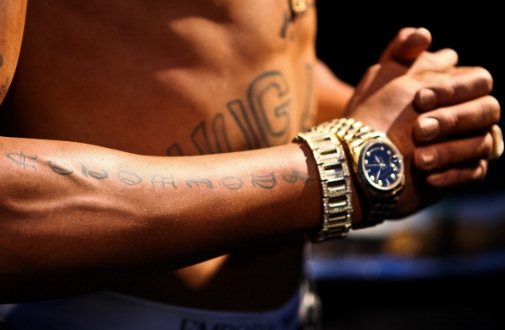

Together with the inscription on the left forearm, it forms the phrase "Notorious Outlaw," which once again refers to Tupac's criminal past.
SPIN
The inscription "Fuck The World". The title of the 13th song on the album "Me Against the World".
A cross that reads "Exodus 18:31."
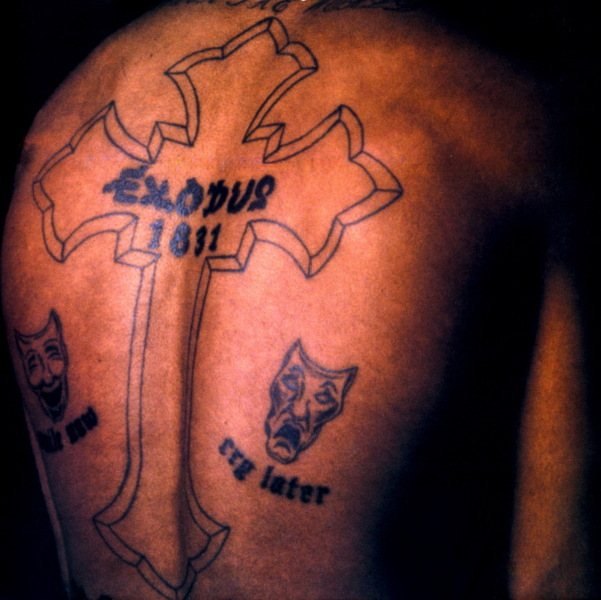

The truth is that there is a verse number 31 missing from Exodus chapter 18. Some are inclined to believe that Puck was actually referring to verse 11, which reads, "Now I have learned that the Lord is greater than all the gods, in the very thing in which they were exalted over the Israelites."
Others believe that 1831 is also a reference to the year that American slave Net Turner led a rebellion that killed 60 white people (including women and children) as well as at least 100 black slaves.
Masks with the inscription "Smile Now, Cry Later"
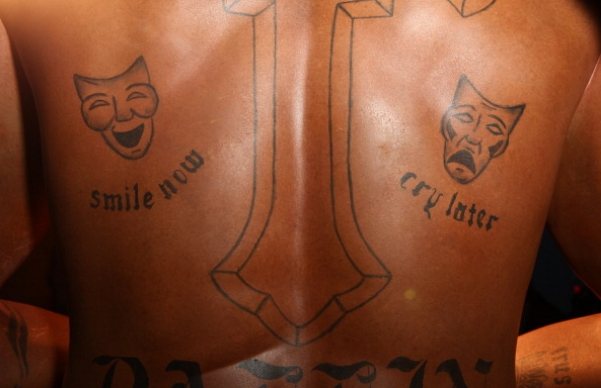

The masks in this case act as a symbol of acting, for which Tupac had a particular passion. He trained with Jada Pinkett-Smith and has starred in several famous movies throughout his career.
Also in the song "Smile" from Scarface's 1997 album Untouchable, Pak explains in detail the writing under the masks, "In the future you'll have a hard time smiling / But no matter what you see, no matter what rain and no matter how much pain you get / You gotta keep your sense of humor / You gotta be able to smile through all that shit."
Big "Ballin" lettering.


One of Tupac's biggest tattoos. In 1994, he released the song "Str8 Ballin" as part of Thug Life, after which he immortalized it as his own creed
His last words were "Fuck you!"
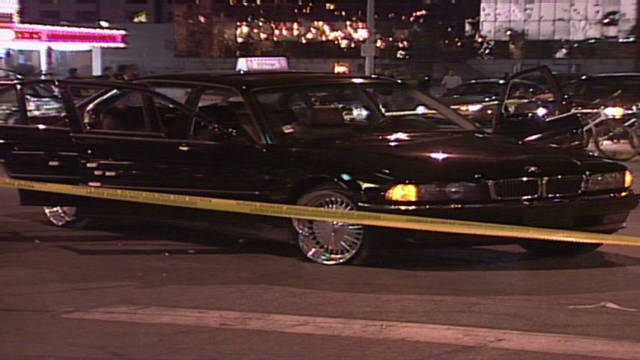

On September 7, 1996, Tupac was shot and killed in Las Vegas by unknown assailants. This happened after Shakur and his Manager Shug Knight attended a boxing bout between Mike Tyson and Bruce Seldon. In the lobby of the MGM Grand entertainment complex, where the fight was going on, Shug and Tupac's guards confronted Southside Compton Crips gang member Orlando Anderson. The latter had recently robbed one of Knight's men, was recognized and beaten right in the lobby.
After that, Tupac and Shug's entourage went to Club 662. Shakur got into the passenger seat of his manager's BMW750i. At one of the intersections, a white Cadillac pulled up in front of the car, from which unknown assailants shot the rapper. His guards chased the attackers, but to no avail. The murder remains unsolved to this day, though the most common version is Orlando Anderson's revenge.
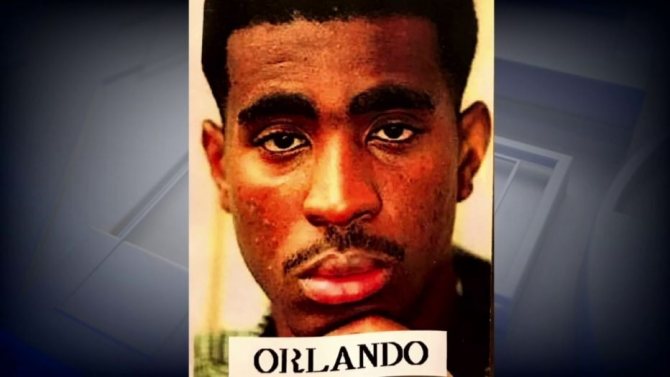

In 2021, former gangster Duane Keith Davis admitted that his nephew Orlando was indeed behind the murder. Anderson himself was shot dead two years later under similar circumstances. It is also known that soon after Shakur's death he started to receive large sums of money into his account, due to which there is a theory that the Notorious B.I.G., the leader of the opposing side in the "War of the Coasts", is the real mastermind behind the murder. Curiously enough he was also shot in 1998, which led to a truce in this conflict.
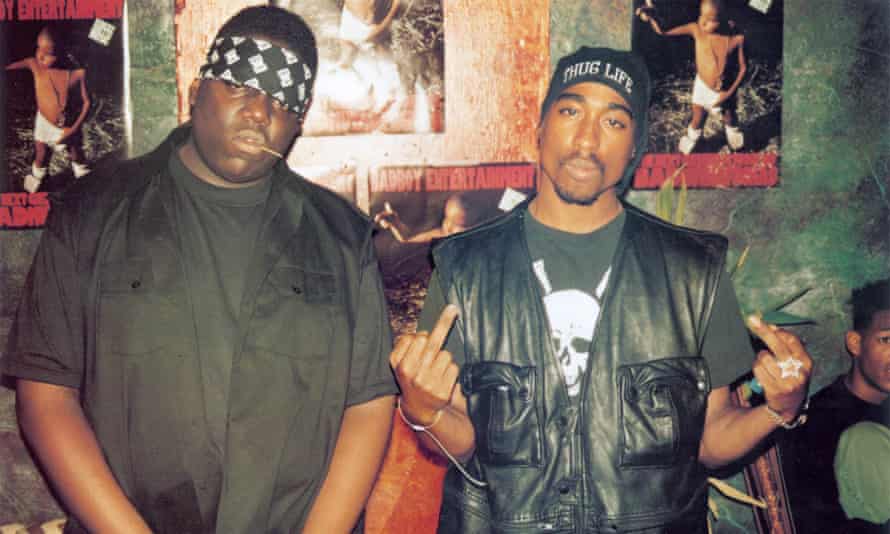

Tupac Shakur and Notorious B.I.G.
Tupac Shakur's last words were "Fuck you," addressed to a police officer who arrived on the scene. He died on September 13, 1996, after slipping into a coma. According to the unspoken will, his ashes along with marijuana were smoked by his friends, the rappers of the band Outlawz.
Tupac Shakur - Death.
Salvation came unexpectedly from the head of a major record company, Suge Knight, a part-time leader of a mafia group. He posted $1.4 million bail for Shakur and secured his release. From that day on Shakur's work belonged to Knight. Tupac Shakur worked like an obsessive, all day long, cheering himself up with alcohol and drugs. He wanted to become a superstar in gangsta rap, which he completely renounced when he was in prison. His film career continued - Tupac Shakur starred in two movies with Hollywood stars Mickey Rourke and Tim Roth.
His life was cut short literally on takeoff. The 25-year-old Tupac Shakur seemed to have a premonition of his death, and in August 1996, he talked about it constantly. On September 7, after a boxing match involving his friend Mike Tyson, Tupac Shakur and Knight went to a nightclub. The bodyguards followed in another car. Around 11 p.m. they were stopped by police - too loud music in the cabin and no license plates on the car. A few minutes later they continued on their way.
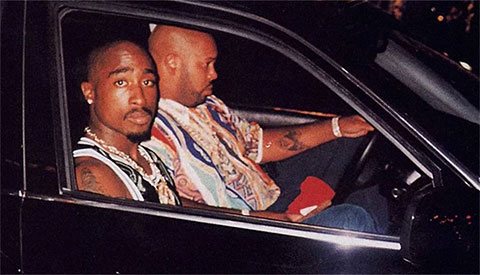

A pre-mortem photo. Tupac Shakur five minutes before his death
At about 11:15 p.m., a four-door white Cadillac stopped at an intersection to the right of Knight and Shakur's car, the windows rolled down in sync and gunfire erupted. Shakur was the only one hit by bullets; he was mortally wounded. He was taken alive to a hospital, where doctors put him in a medically induced coma, but it didn't help. September 13, 1996 was a day of mourning for Tupac Shakur's army of millions of fans. No autopsy was performed. The famous rapper's body was cremated, and some of his ashes, mixed with marihuana, were smoked by his friends.
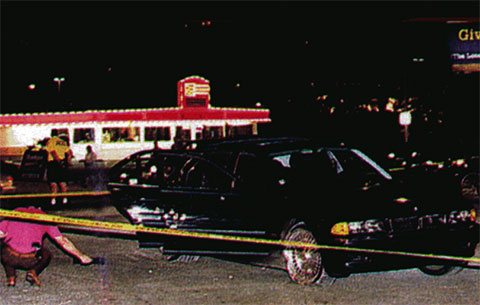

Car shot by killer
Tupac Shakur's murder is still unsolved to this day. He remains an iconic rapper today, with monuments erected not only in the United States, but for some reason in Germany as well. Recently, a letter Shakur wrote in prison was put up for sale, the original cost was $225,000.

